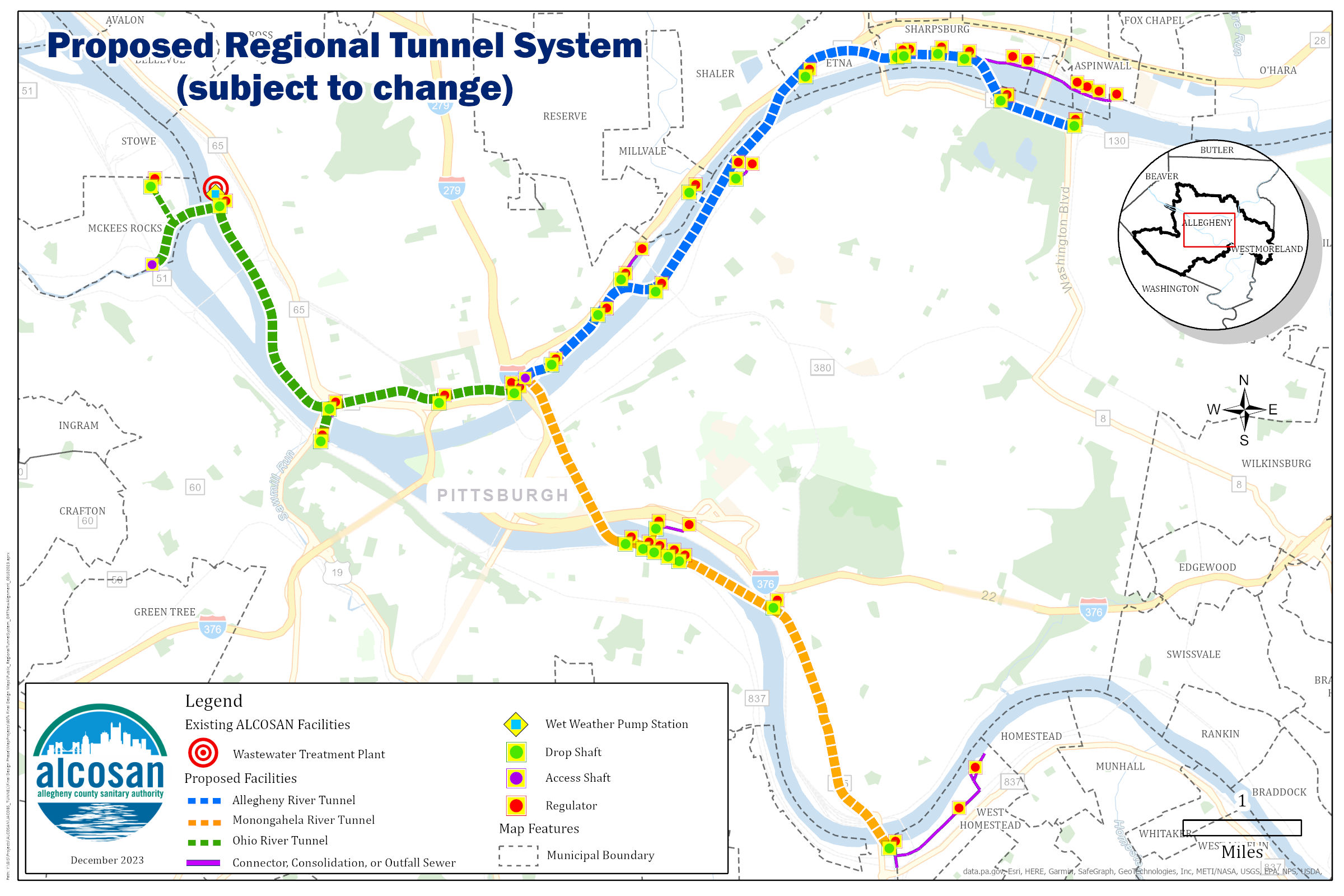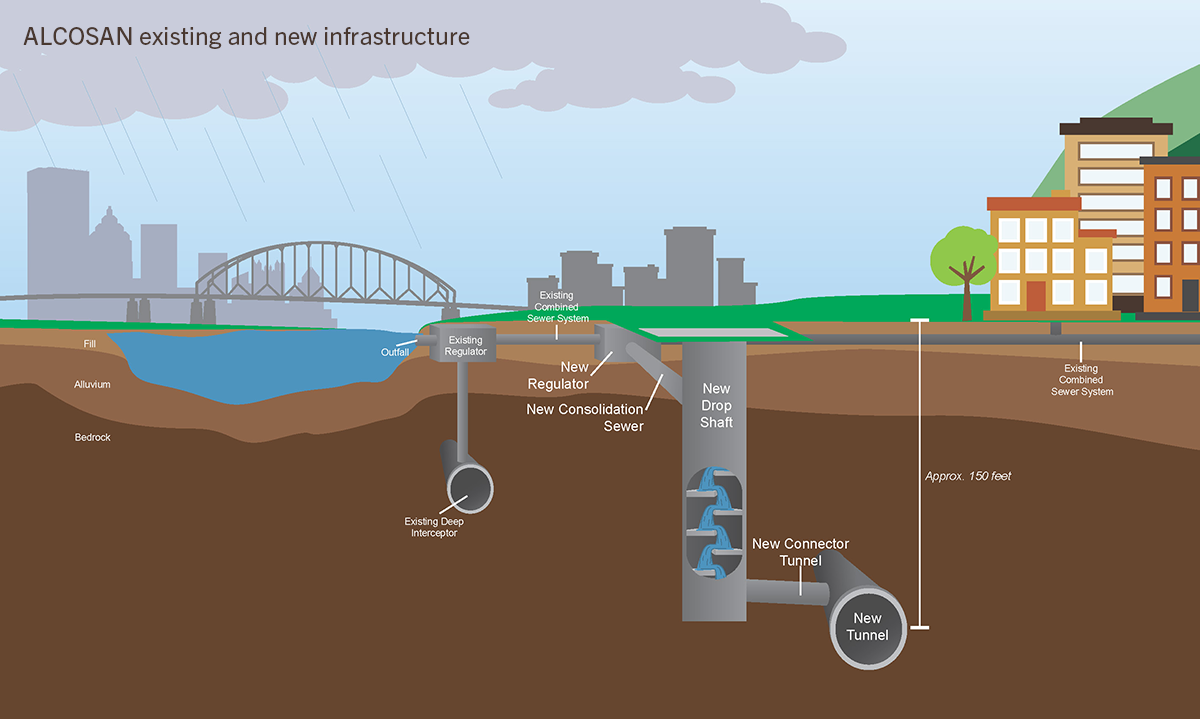Building a Cleaner Future: ALCOSAN's Ohio River Tunnel Project
Watch the replay of our public meeting on January 30, 2024 for the North Side area of the City of Pittsburgh and learn about ALCOSAN's progress with the Clean Water Plan, an essential step towards revitalizing the rivers in our region. This federally mandated regional tunnel initiative aims to reduce combined sewer overflows, which will enhance river recreation, and bring short-term construction activities that will lead to long-term benefits for our communities.
Why Build a Regional Tunnel System?
To accommodate more flow, ALCOSAN will construct a new conveyance, or transport system made of deep tunnels and related infrastructure. The new regional tunnel system will consist of three major tunnel projects, all approximately 150+ feet deep, which will capture wet weather combined sewer overflows and move them to the plant for treatment.
ALCOSAN will also use adaptive management and base long-term planning on data from green infrastructure, flow-reduction projects, and the latest technology. This new regional tunnel system, paired with plant expansion and other components of the Clean Water Plan, is expected to reduce wet weather overflows by approximately 7 billion gallons per year by the end of 2036.
New Tunnel Segments
- Ohio River Tunnel: 4.9 miles long
- Allegheny River Tunnel: 6.2 miles long
- Monongahela River Tunnel: 5.4 miles long
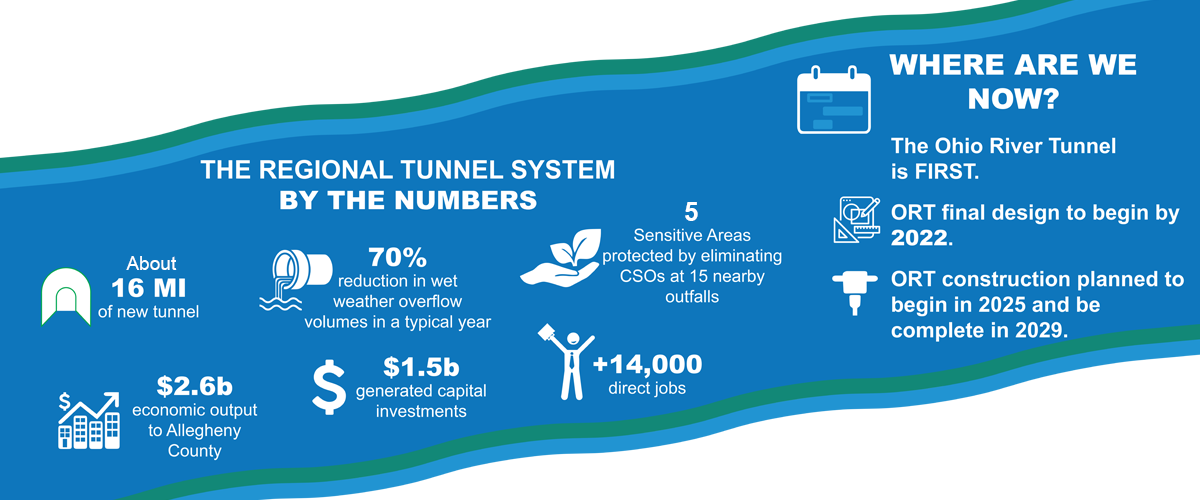
Tunnels and Near-Surface Facilities
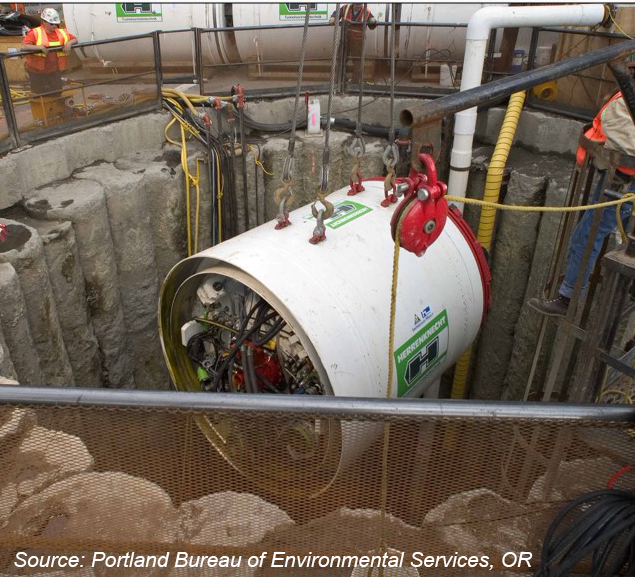
Consolidation Sewers
Consolidation sewers are needed to convey some of the combined sewage to the drop shafts that then transfer the flow to the main tunnels. Consolidation sewers avoid building additional drop shafts and long adit connections to the main tunnels.
Consolidation sewers are anticipated to range between 24-inches and 144-inches in diameter with depths ranging between 10-feet and 50-feet below ground. Depending on conditions at the location the consolidation sewers could be built using micro-tunneling techniques or an open-trench approach.
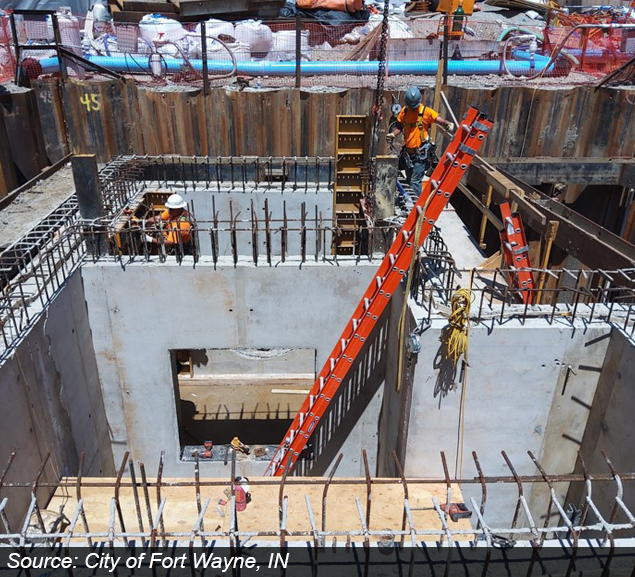
Regulators
Regulators are underground structures that are built along existing sewers to control where sewage is sent. Regulators allow normal dry weather flow to continue to the existing sewer network but during wet weather they divert flow to drop structures and into the tunnel via consolidation sewers.
It is anticipated that these regulator structures will be sized from 6-feet by 12-feet to 28-feet by 50-feet.
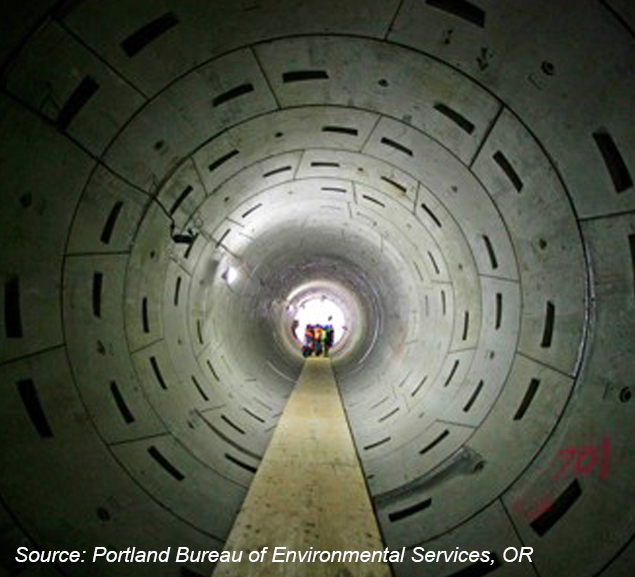
Deep Tunnels
During wet weather events, the three main tunnels will capture and convey the combined sewage from the drop shafts to the new wet weather pump station for treatment at ALCOSAN’s wastewater treatment plant (WWTP). At times the tunnel system will temporarily store excess flow until it can be treated at the WWTP.
The main tunnels will primarily be constructed using large tunnel boring machines (TBM) that will be lowered from the surface and later retrieved via construction shafts.
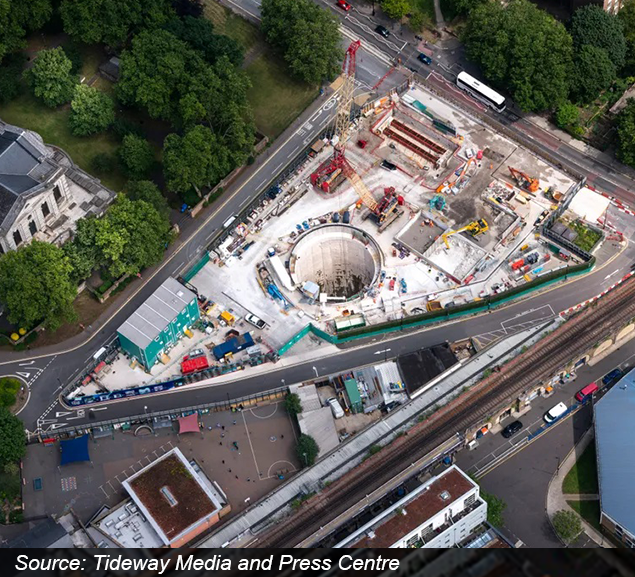
Drop Shafts
Drop shafts are deep, vertical structures that transfer the combined sewage from the surface to the tunnels.
Their design includes hydraulic structures to manage the flow as it drops and to dissipate the energy generated to prevent damage to the drop shaft and the tunnels. The drop shafts are anticipated to range between around 15 feet and 50 feet in diameter depending on location.
The size of the construction area depends on the diameter of the drop shafts. Typically, an acre is required for safe and efficient construction.
After construction, once the hole is covered, only access for maintenance activities is required.
Frequently Asked Questions
The FAQs above include the most common questions we receive about the Regional Tunnel System, but there's much more to explore! Delve into additional FAQs on topics such as:
- Construction Schedule and Impact
- Community Impact and Engagement
- Economic Impact and Job Creation
- Climate and Environmental Impact
- The Ohio River Tunnel
Explore our additional FAQs and see how the Clean Water Plan is making a difference in your community.
Current Status
Ohio River Tunnel project:
The final designer is working towards a 90% design. ALCOSAN continues to work directly with the communities along the proposed routes, including working on acquiring or gaining access to the necessary properties.
Allegheny River Tunnel project:
The final designer for a near surface portion of the project to be constructed in the Sharpsburg, O’Hara and Aspinwall area recently completed the 30% design and is working towards a 60% design.
